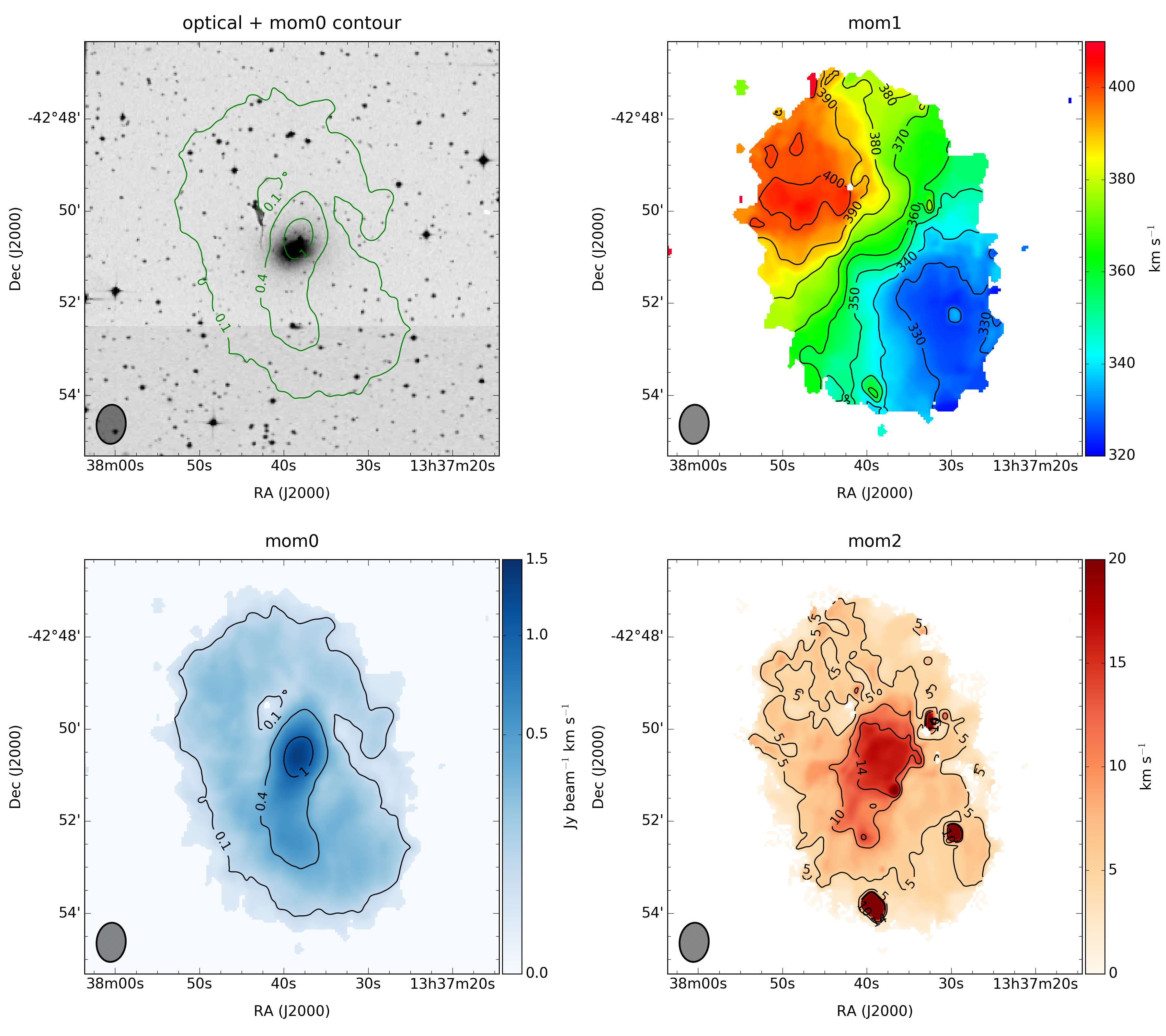NGC 5237

NGC 5237 (HIPASS J1337-42)
appears to be a dwarf transitional galaxy, located in the Cen A group
at a TRGB distance of 3.40 ± 0.23 Mpc (Karachentsev et al. 2007). Its
nearest neighbours are the dSph galaxy KKs 57 (DTRGB = 3.93 ±
0.28), the IBm galaxy ESO 325-G?011 (HIPASS J1345-41) and the giant elliptical
Cen A, separated by 46.7 arcmin, 100.7 arcmin and 134 arcmin (~133 kpc),
respectively. Our ATCA HI moment maps reveal a large HI disc, extending well
beyond the bright stellar body, and a slightly warped velocity field. In
Fig. 11 we show the NGC 5237 HI distribution at different angular resolutions,
revealing areas of high-density HI emission within the extended HI disc.
Interestingly, we find the densest HI peak to coincide with a young
star-forming region, well-resolved in HST images from the Hubble Legacy
Archive. While the overall stellar population resembles that of a dwarf
elliptical galaxy, the single HII region to the north-west and offset HI
emission suggest that NGC 5237 is a dwarf transitional galaxy. Its vicinity
to Cen A makes it likely that tidal interactions / harassment are responsible
for the observed peculiarities.
Fig. 11 also highlights the difference in
position angles between the outer and inner HI distribution, which are both
significantly offset from the stellar distribution. Thomson (1992) presents
numerical simulations of galaxy interactions in the Cen A group and discusses
the likely impact on NGC 5237 and the edge-on galaxy ESO 270-G017, also known
the Fourcade-Figueroa shred. Using our low-resolution ATCA HI maps we measure
FHI = 10.9 Jy km/s, comparable to the HIPASS FHI of 12.1
± 2.6 Jy km/s (Koribalski et al. 2004), and derive MHI = 3
× 107 M☉. Using 3D FAT Kamphuis et al. (2015)
obtain an HI rotation curve indicating vrot = 75.2 km/s at
Rmax = 4.9 kpc (for i = 33.8 degr and PA = 50.2 degr) and
Mdyn = 6.5 × 109 M☉. Cote et al.
(2009) detect Hα emission from the bright HII region and derive SFR
= 4.6 × 10-3 M☉/yr. Radio continuum emission
from that region is detected in our ATCA 20-cm data (see Shao et al. 2017).
Reference:
Koribalski et al. 2018
* LVHIS database
* LVHIS homepage
* next